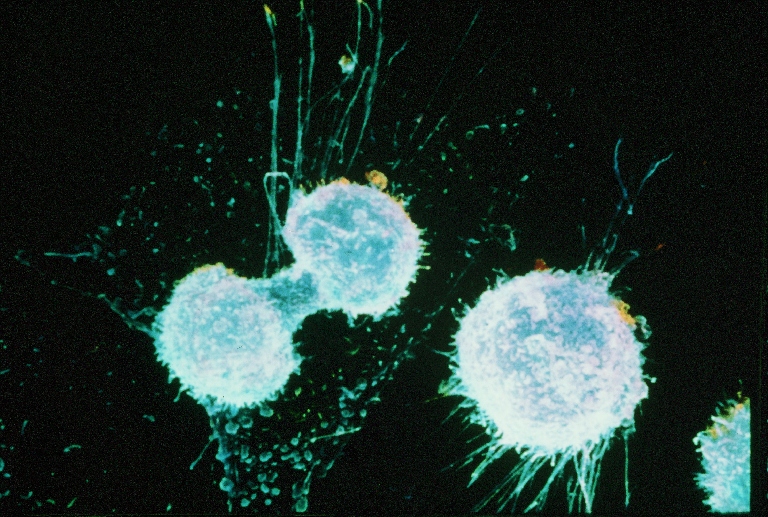
With more than 25,000 newly diagnosed women each year, ovarian cancer is the seventh leading type of cancer for women in the United States. Ovarian cancer is also the fourth leading cause of cancer-related death in women. unfortunately, only about 19 percent of ovarian cancer cases are identified early because the disease frequently shows extensive symptoms only after it has started to spread. However, there are signs researchers have identified as early symptoms of ovarian cancer. And when caught early, ovarian cancer is treatable.
Normally, the body produces new cells to replace old ones that die. However, in some cases new cells may grow when they are not needed, or old ones may not die as they should. When this happens, the extra cells form a mass called a growth, tumor, or cyst.
The tumors can be benign, which means they are not cancer and are not usually life threatening because they don’t spread to other tissues or other parts of the body. Malignant tumors, however, are those that can spread to other parts of the body when cells break away from the tumor and enter the bloodstream or lymphatic system (part of the body’s immune system). Malignant tumors are life threatening and are the ones known as cancer.
Ovaries are part of a woman’s reproductive system and are responsible for producing the hormones estrogen and progesterone. a cyst can form on the surface or inside of the ovaries. Cysts are masses that contain fluid and sometimes also contain solid tissue. most of the time the cysts are benign, but the ones that are malignant are known as ovarian cancer.
The symptoms of ovarian cancer are not always obvious and this is the reason it is often not detected early. As the cancer grows, it can cause:
• Swelling, bloating, or pain in the abdomen
• Gas or indigestion
• Constipation or diarrhea
• Pelvic, back, or leg pain
• Shortness of breath
• Feeling full quickly or difficulty eating
• Feeling constantly tired
• Feeling the need to urinate frequently
• Heavy periods or bleeding after menopause
In the past it was thought that ovarian cancer did not produce regular, identifiable symptoms until the cancer had already spread. However, in 2007 a group of organizations, including the American Cancer Society, issued a statement based on research into early signs of ovarian cancer. in the statement, researchers identified four symptoms in particular as possible early signs of ovarian cancer: bloating, feeling full quickly or difficulty eating, pelvic or abdominal pain, and frequent or urgent urination.
There are three types of ovarian cancer, determined by where the cancer cell growth begins. which type a woman has affects her treatment options and prognosis.
• Epithelial. most ovarian cancers are epithelial. Epithelial cancer begins on the thin layer of tissue that covers the outside of ovaries.
• Germ cell. Germ cell ovarian cancer is more common in younger women and begins with tumor growth inside egg-producing cells.
• Stromal. Stromal cancer begins in the cells that produce the hormones estrogen, progesterone, and testosterone.
Researchers do not know what definitively causes ovarian cancer, but there are risk factors that can increase the chances of a woman developing ovarian cancer. it is important to keep in mind that having one or more of these risks does not mean that a woman will develop ovarian cancer.
• No pregnancies. Women who have never been pregnant have higher risks of developing ovarian cancer.
• Family history. The risk of developing ovarian cancer is higher for women who have family members that developed ovarian or breast cancer. About 10 to 20 percent of women with ovarian cancer have a family history of ovarian or breast cancer.
• Previous cancer diagnosis. The risk of developing ovarian cancer is higher if a woman has previously had breast, colon, uterine, or rectal cancer.
• Aging. The risk of developing ovarian cancer increases with a woman’s age, with most cases occurring after menopause.
• Hormone Replacement Therapy. The research has not been conclusive, but some studies indicate that women who use hormone replacement therapy to treat menopause are at an increased risk of developing ovarian cancer.
• Inherited gene mutations. Breast cancer gene mutations, known as BRCA 1 and BRCA 2, significantly increases the chances of developing ovarian cancer. another gene mutation that increases risk is hereditary nonpolyposis colorectal cancer (HNPCC).
Because ovarian cancer symptoms can be vague or develop late in cancer progression, it is important that woman have regular pelvic exams. This is especially important for women with any of the listed risk factors. Identifying ovarian cancer early is a woman’s best chance for successful treatment and recovery.
MedicineNet: Ovarian Cancer
Mayo Clinic: Ovarian Cancer
National Ovarian Cancer Coalition: What is Ovarian Cancer?
WebMD: Ovarian Cancer Overview and Facts
John Hopkins Ovarian Cancer Center: About Ovarian Cancer
American Cancer Society: Ovarian Cancer has Early Symptoms